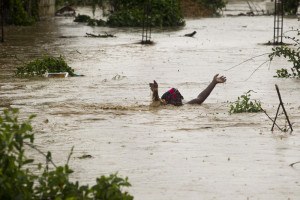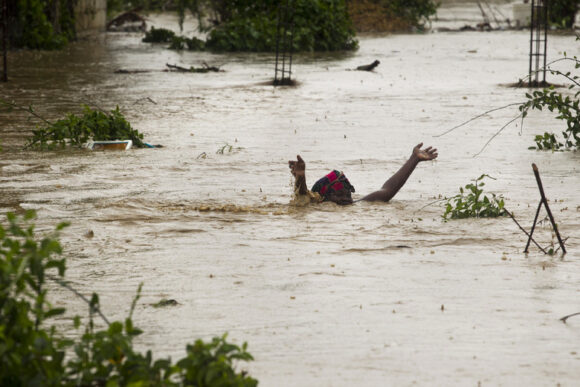The Caribbean Catastrophe Risk Insurance Facility has reported that, while some of its members were impacted by tropical storm Isaac, most of the damage was minimal. “Dominica, Haiti and the Bahamas were the CCRIF countries affected by Isaac,” said the report.
“However, preliminary runs of the CCRIF loss model generated only small government losses in the affected countries, which in each case was below the country’s policy trigger level and therefore no payout is due.”

Haiti was the hardest hit country, as Isaac moved over Hispaniola, pouring heavy rains during the early morning on the 25th of August, which caused flooding and mudslides. Isaac’s center passed approximately 50 miles west of the capital, Port-au-Prince. “As the center moved away to the northwest, the heaviest thunderstorms moved ashore with rainfall rates estimated to be up to 1 inch per hour,” said the report.
“Early reports indicate that the worst damage has been experienced in the southeast where the system made landfall. In the city of Jacmel, which is situated on the south coast, as many as 1,500 residents took refuge in hurricane shelters. The Government reported that more than 14,000 persons had left their homes and another 13,500 were living in temporary shelters until the 25th of August.
“Mega IV Camp which housed approximately 8,000 people in makeshift shelters was affected by flooding and fallen trees which damaged hundreds of tents. The Grise River which is situated to the north of Port-au-Prince overflowed its banks and affecting the shanty town of Cite Soleil. Many persons situated in that area were forced to evacuate their homes immediately as the water had reached a depth greater than 3 feet.”
In addition the CCRIF noted that the UN had “confirmed that there has been damage to the country’s banana crop,” but its extent is as yet unknown.
In addition the CCRIF said that “preliminary reports indicate that there may have been as many as 19 fatalities as a result of this system. The UN has started to respond to the humanitarian needs of the local population by providing stocks of food and drinking water, therapeutic nutrition supply, hygiene kits and cholera response kits.
“Haiti’s national electricity supplier confirmed that at one point 30 of the country’s 32 electricity grids were down. A dozen houses were destroyed and another 269 were damaged. However, Haiti’s spokesman for the United Nation’s Office of Coordination of Humanitarian Affairs stated that the damage appears to be less significant than expected.
“There were no reports of significant damage as a result of the storm as it crossed the southern Bahamian islands.
“Preliminary runs of the CCRIF loss model generated only small government losses in the affected countries, which in both cases were below each country’s trigger level and therefore no payout is due.”
Source: Caribbean Catastrophe Risk Insurance Facility
Was this article valuable?
Here are more articles you may enjoy.


 UK to Compel 1,000 Firms to Shore up Cyber Defenses After Hacks
UK to Compel 1,000 Firms to Shore up Cyber Defenses After Hacks  Deutsche Bank’s DWS Pays $27M in German Greenwashing Case
Deutsche Bank’s DWS Pays $27M in German Greenwashing Case  Ireland and UK Face High Wildfire Risks After Dry, Warm Weather
Ireland and UK Face High Wildfire Risks After Dry, Warm Weather  The Changing ADA Lawsuit Landscape: Things Claims Professionals Need to Know
The Changing ADA Lawsuit Landscape: Things Claims Professionals Need to Know 